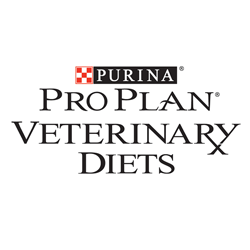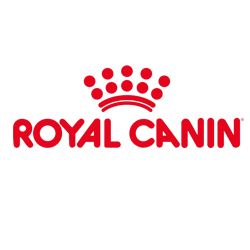Screening Evaluation
There are two overarching components to a complete nutritional assessment: a screening evaluation and an extended evaluation, if needed. A nutritional assessment starts with a screening evaluation followed by an extended evaluation if nutritional risk factors are identified (Figure 2). A screening evaluation should be performed on every pet at every visit. The elements of a screening nutritional assessment are not time consuming and are performed as part of a routine history and physical exam. The screening should include an evaluation of nutritional history, environment, activity level, body weight (BW), body condition score (BCS), and muscle condition score (MCS), followed by a complete physical exam. If nutritional risk factors are identified, an extended evaluation is recommended.
Figure 2
Nutritional Assessment Screening Evaluation: Every Pet, Every Visit
Download PDF

A nutritional history should include not only main meal items but also treats, table food, supplements, and foods used for medication administration. The American College of Veterinary Nutrition (ACVN) and the WSAVA publish sample diet history forms (DHFs).4,5 Longer examples are also available.6 To improve nutritional history accuracy, owners can be asked to complete the DHF at home. Practice team members can then verify DHF information that is incomplete or inaccurate.
BCS is a physical assessment of body fat mass.7,8 The 9-point BCS scale is validated to correlated with body fat percentage (BF%) using dual-energy X-ray absorptiometry (DEXA).9,10 Every incremental increase in BCS is equivalent to a 5% increase in BF% while each BCS >5/9 is equivalent to being 10% overweight (Table 2).9–11 The authors suggest universal use of the 9-point (1–9) BCS scale with whole integers for the standardization of medical records, consistency of data collection and interpretation for research, and for consistent communication from veterinary team members to pet owners.
Table 2
Summary of BCS Scales and Their Relationship with BF and BW
Download PDF
|
9-Point Scale |
5-Point Scale |
% BF* |
% Overweight |
|
4 |
2.5 |
15–19 |
Ideal |
|
5 |
3 |
20–24 |
— |
|
6 |
3.5 |
25–29 |
10% |
|
7 |
4 |
30–34 |
20% |
|
8 |
4.5 |
35–39 |
30% |
|
9 |
5 |
40–45+ |
40% |
|
>9 |
>5 |
— |
>40% |
* Current BW × (100 – % BF) ÷ 0.8. Lean mass is 80% of ideal weight, assuming 20% BF.
—, not applicable; BCS, body condition score; BF, body fat; BW, body weight.
MCS is a physical assessment of the patient’s muscle mass, which includes visualization and palpation of the musculature over the spine, scapulae, skull, and pelvis.12,13 The authors suggest a narrative description of MCS that includes normal muscle mass or mild, moderate, or severe muscle loss. The MCS has been significantly correlated with ultrasonographic measurements of the epaxial musculature (cats and dogs) and DEXA (cats).14–16 The routine use of MCS is important to identify patients with muscle loss related to cachexia and sarcopenia (see terminology definitions in Table 3). Both cachexia and sarcopenia can adversely affect outcomes in veterinary patients.17 BCS and MCS are not causally related and should be assessed separately (e.g., an animal may be overweight with muscle loss). Underweight patients often have loss of both body fat and muscle mass, yet BCS and MCS should still be scored separately.
Table 3
Terminology definitions
Download PDF
|
Terminology |
Definition |
|
Cachexia |
Loss of muscle mass associated with disease |
|
Sarcopenia |
Loss of muscle mass associated with aging in the absence of disease |
|
Dysrexia |
Altered food intake (e.g., altered food preferences, cyclic appetite) |
|
Hyporexia |
Decreased food intake |
|
Anorexia |
No food intake |
|
Bioavailability |
The proportion of a nutrient that is absorbed from the diet and used for body functions |
|
Digestibility |
The proportion of a nutrient that is digested and absorbed from the diet |
|
Complete |
Essential nutrients are present in the diet |
|
Balanced |
Essential nutrients are in the correct proportions in the diet |
Although typically not included in the screening evaluation, additional tools to be considered are the body fat index (BFI) and girth assessments. BFI, like BCS, is a validated scale to correlate with BF% in both the dog and cat.18,19 A BCS is limited in its assessment of patients with a high BF% (>45%). The BFI system is a useful tool in differentiating patients with a higher level of BF%. Morphometric measurements to assess lean body mass and fat mass have been established in the dog and cat. These measurements in addition to BFI are useful for patients with a BCS ≥8/9.
Limb girth assessments, an objective measure of muscle mass and strength, are an emerging area of investigation and may prove to be valuable in specific patient populations or for specific patients. For example, this could be a tool for an orthopedic patient enrolled in a physical rehabilitation program.
A fecal score can be included in the screening assessment as a useful tool to assess stool quality and characteristics. Various fecal scoring systems have been proposed for veterinary patients.20,21 A fecal scoring system used repeatedly in a practice can be useful for consistent communication between the client and veterinary team members and to follow trends in fecal quality.






